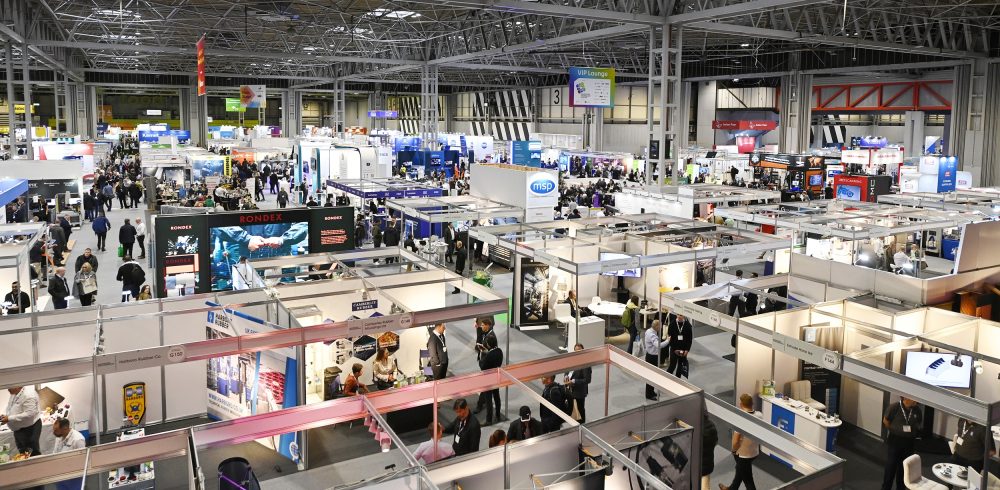– A New Era of Defence Procurement –
The global defence industry has always been characterised by long-standing alliances and cost-driven procurement strategies. However, change is afoot. In fact, every minute, $4.03 million is being invested into emerging technologies, signalling a radical shift from traditional procurement practices to a bold embrace of innovation. Here, Simon Farnfield, event director at Advanced Engineering, explores this new trend and explains how it’s a strategic necessity in an era where technological advancements are rapidly defining the battlefield.
Historically, the defence industry has relied on well-established relationships with a consistent circle of suppliers. These relationships, built on trust and extensive past dealings, often meant that procurement decisions leaned heavily towards cost-effectiveness and the reliability of known entities.
However, the landscape of warfare and defence technology is changing. The emergence of new threats and the rapid pace of technological advancements necessitate a change away from the “cheapest from old friends” approach, to something more dynamic.
The adoption of innovative technologies holds several key advantages. Firstly, it enhances the effectiveness of defence strategies by integrating cutting-edge technologies such as artificial intelligence (AI) for threat monitoring, robotics — such as the ones used to neutralise explosive devices, or reconnaissance missions — or cyber capabilities such as cybersecurity.
Secondly, it fosters a competitive environment among suppliers, which can lead to better quality and more advanced technical solutions at potentially lower costs.
The shift in procurement strategies
This shift towards innovation does not mean completely abandoning long-established partnerships, but rather re-evaluating procurement criteria to prioritise technological advancement and strategic value.
Defence departments and agencies are increasingly adopting a dual approach that balances the benefits of traditional procurement methods, with the need to integrate more innovative technologies.
In practice, this means opening procurement to a broader range of suppliers, including startups and tech companies, which traditionally played a peripheral role in the defence industry. This broader inclusion encourages a more competitive market, drives down costs and spurs technological advancements through fresh ideas and perspectives.
Innovation challenges
Despite the advantages, the transition to a more innovation-centric approach in defence procurement is not without its challenges. A significant hurdle is the inherent risk associated with new technologies and untested suppliers. The defence sector’s stringent requirements of reliability and security mean that integrating new products and technologies can be a slow and cautious process.
Additionally, there is the challenge of procurement cycles in the defence industry, which are typically longer due to the complexity and scale of defence contracts. This can delay the adoption of innovative technologies, which may become outdated by the time they are fully integrated into defence systems. This particularly the case for when the cycle includes thorough testing phases, pilot programs and gradual implementation plans that allow for adjustment before full deployment.
Overcoming resistance
To overcome these challenges, it’s crucial for stakeholders in the industry to foster a culture that values innovation alongside reliability and cost-effectiveness. This can be achieved through various means, such as increasing collaboration between traditional defence contractors and technology startups, investing in research and development (R&D) and adapting procurement processes to be more agile and responsive to technological changes.
Moreover, governments and defence agencies can play a pivotal role by setting clear policies that encourage innovation. This includes providing grants, subsidies or tax incentives for R&D, which could lower the barriers to entry for smaller tech firms and encourage large corporations to invest more heavily in innovative technologies.
Governments could also potentially adjust regulations that hinder the adoption of new technologies. Furthermore, legislative support for intellectual property rights and international trade agreements can also enhance the global competitiveness of a nation’s defence industry.
International co-operation also plays a crucial role in this transformation. By collaborating on defence technology projects and sharing knowledge, countries can leverage their collective expertise to accelerate innovation. This not only enhances the capabilities of each nation’s defence systems, but also helps to standardise new technologies across borders too, which is essential for coalition operations.
As the defence industry embraces a new wave of technological innovation, it’s also witnessing a shift in workforce dynamics and skill requirements. The growing reliance on cutting-edge technologies, like AI and cybersecurity, necessitates a corresponding evolution in the skills that defence personnel must possess. This evolution is prompting defence agencies and contractors to invest significantly in training programmes and partnerships with educational institutions to develop a workforce capable of managing and advancing these new technologies.
The ongoing evolution in the defence industry is not just about adopting new technologies, but also transforming the ecosystem in which these technologies emerge and mature.
Engaging with a broader array of innovators — from nimble start-ups to tech giants — can provide defence agencies and contractors access to cutting-edge ideas that challenge the status quo. This openness to diverse technological influences is crucial as the pace of innovation accelerates, necessitating faster adaptation and integration to maintain a competitive edge in national defence capabilities.
There’s no better way to keep up to date or meet with new and established technology companies to partner with, than attending the Advanced Engineering UK trade show. The event is returning to the NEC, Birmingham, on October 30 and 31, 2024. Register for free online today here.
Manufacturing & Engineering Magazine | The Home of Manufacturing Industry News









